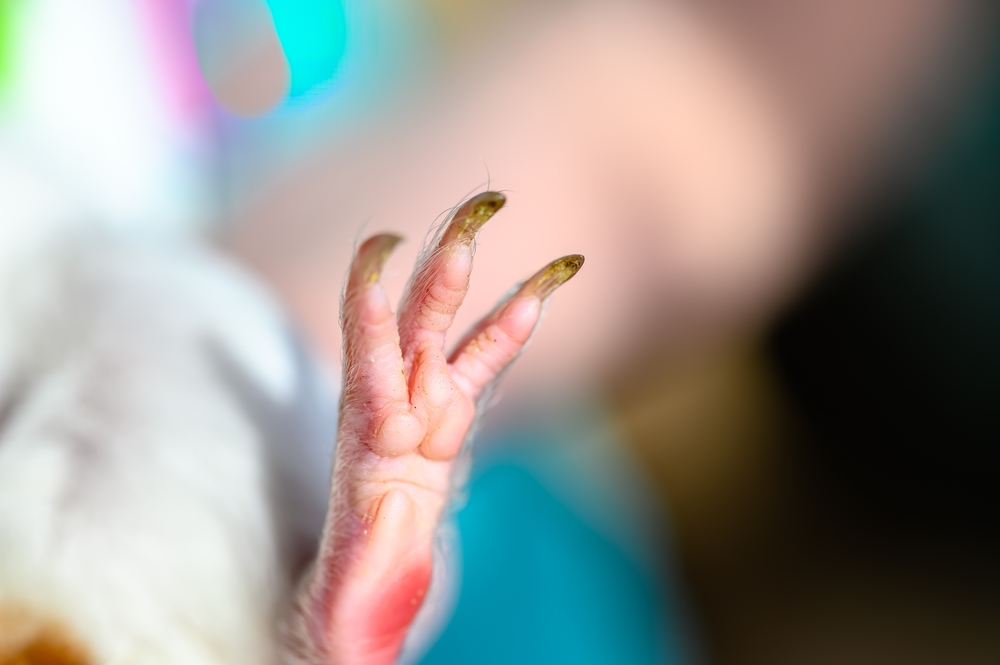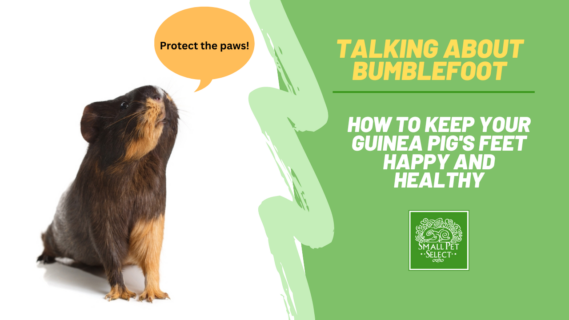Bumblefoot in guinea pigs is one of the most common complications with a guinea pig’s health. It’s also one of the most preventable conditions! Bumblefoot (pododermatitis) is when the footpad gets infected and in severe cases that infection can spread to the bone.
There are a few factors that can contribute to bumblefoot in guinea pigs but the main cause of bumblefoot has to do with what a guinea pig is walking on as well as how clean that surface or material is. We will get into it all so you can do everything you can to keep your cavy’s feet happy and healthy.
How To Prevent Bumblefoot in Guinea Pigs
Bumblefoot develops when there’s prolonged pressure on the skin. Certain enclosure materials can create this pressure more than others. The heavier the guinea pig the more pressure there will be as well.
There shouldn’t be any exposed bars on the floor of your guinea pig’s habitat. Soft bedding and soft liners are exactly what you need to prevent bumblefoot but you also need to make sure these surfaces are clean.

This floor is too rough for guinea pigs!
Keep Your Cavy’s Enclosure Dry
Wet environments lead to bacteria growth which makes sores on your cavy’s feet much worse. Don’t wait too long to replace soiled bedding and check your cavy’s cage every day for spills or accidents.
Fleece Liners Are Great For Common Walking Areas
Many cavy parents use fleece liners to create a soft walking surface for their guinea pigs. Look at those little tiny feet! They are sensitive and need to be protected.
Use Soft and Absorbent Bedding In The Litter Box
Proper bedding in a guinea pig’s litter box will keep their feet happy as well as keep their enclosure dry. Soft Paper Bedding is an excellent option for creating a soft and dry space for your guinea pig.
Risk Factors
While your cavy’s walking surfaces are what cause bumblefoot, other factors can make your guinea pig more susceptible to developing bumblefoot or any infection!
Conditions where a guinea pig is more vulnerable to developing bumblefoot:
being overweight
old age
decreased immune function
a diet low in vitamin C
A proper diet and plenty of exercise help keep your guinea pig healthy so they can fight off illnesses. However, sore paws can happen to any guinea pig under rough conditions so it’s important to regularly check your guinea pig’s feet for signs of bumblefoot so you can address the situation.
What Does Bumblefoot Look Like?
Bumblefoot usually begins as swollen foot pads. You may even notice your cavy is more sensitive to their paws being touched than usual. If the condition progresses you will see crusted paws and bleeding.

Signs of Bumblefoot in Guinea Pigs
sensitivity
limping
swollen foot pads
sores
bumpy paws
red and inflamed paws
ulcerated paws
To see more pictures and hear about a vet’s experience with bumblefoot check out this article from Dr. Brem!
How To Treat Bumblefoot in Guinea Pigs
Rough surfaces in your guinea pig’s enclosure are what create sore feet, and exposure to bacteria is what creates the infection. When the infection gets worse without being treated it can spread to the guinea pig’s bone and in extreme situations amputation may be the only treatment option.
Bumblefoot can also become chronic as the inflammation creates more inflammation and a guinea pig’s paws become increasingly sensitive. For these reasons, getting treatment as quickly as possible is extremely important.
Mild cases of bumblefoot are treated by changing the conditions in their enclosure but signs of bumblefoot really need to be checked out with a guinea pig-savvy vet.
A vet will know if the feet need any treatment. They can give you an ointment to help heal their feet or an antibiotic to fight the infection. Bandages help give the paws time to heal. A vet can also discuss your current setup and how to make improvements to your guinea pig’s habitat.
How To Avoid A Recurrence Of Bumblefoot
If your guinea pig has had bumblefoot in the past then you need to be extra diligent with preventative strategies. Some guinea pigs have more sensitive feet than others but feet that have recovered from bumblefoot are especially sensitive.
Keep your guinea pig’s cage as clean and dry as possible. Don’t let it go too long between cleanings and deep cleanings. Change the bedding in their litter box often.
Make sure your guinea pig has a soft liner throughout their habitat and that it’s washed often and kept dry.
Check your guinea pig’s feet regularly for signs of bumblefoot. The bottom of your guinea pig’s feet can go unnoticed when you’re interacting with your guinea pig. Make it a regular part of your grooming routine to check out those paws!
Talk to your vet about any concerns and don’t ever let issues go unaddressed as conditions such as bumblefoot can progress quickly.
We are not veterinarians, and none of our information should be construed as veterinary advice.
Before adding any new product, please consult your exotic veterinarian. If your pet is acting unwell and you have concerns for their well being, please contact your vet immediately.





